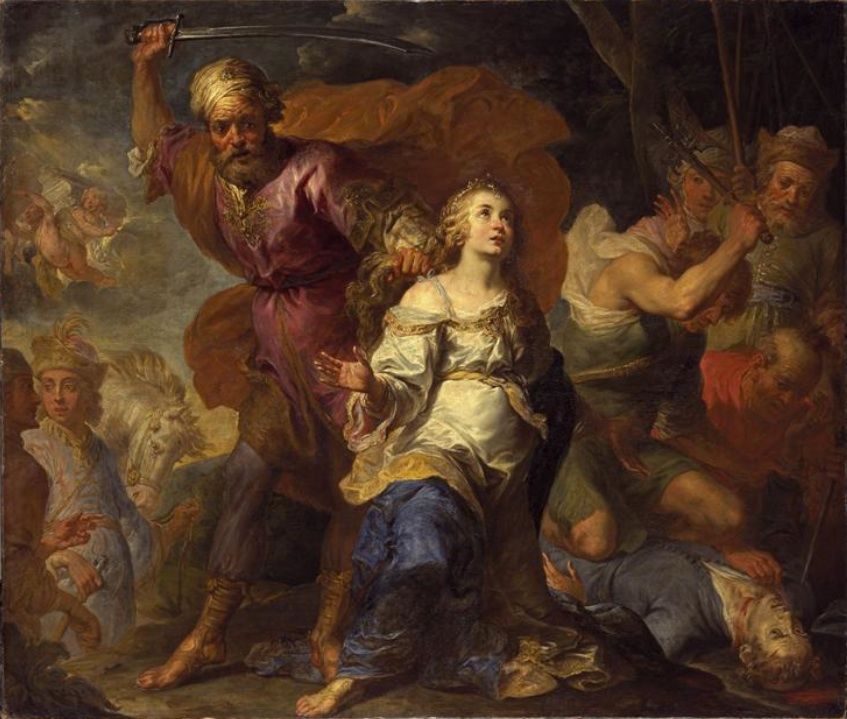Saint Dymphna
The earliest historical account of the veneration of St. Dymphna dates from the middle of the thirteenth century. Under Bishop Guy I of Cambrai (1238-47), Pierre, a canon of the church of Saint Aubert at Cambrai, wrote a "Vita" of the saint, from which we learn that she had been venerated for many years in a church at Gheel (province of Antwerp, Belgium), which was devoted to her. The author expressly states that he has drawn his biography from oral tradition.
According to the narrative, Dymphna — the daughter of a pagan king of Ireland — became a Christian and was secretly baptized. After the death of her mother, who was of extraordinary beauty, her father desired to marry his own daughter, who was just as beautiful, but she fled with the priest Gerebernus and landed at Antwerp. Thence they went to the village of Gheel, where there was a chapel of St. Martin, beside which they took up their abode. The messengers of her father however, discovered their whereabouts; the father betook himself thither and renewed his offer. Seeing that all was in vain, he commanded his servants to slay the priest, while he himself struck off the head of his daughter. The corpses were put in sarcophagi and entombed in a cave where they were found later. The body of St. Dymphna was buried in the church of Gheel, and the bones of St. Gerebernus were transferred to Xanten.

This narrative is without any historical foundation, being merely a variation of the story of the king who wanted to marry his own daughter, a motif which appears frequently in popular legends. Hence we can conclude nothing from it as to the history of St. Dymphna and the time in which she lived. That she is identical with St. Damhnat of Ireland cannot be proved. There are at Gheel fragments of two simple ancient sarcophagi in which tradition says the bodies of Dymphna and Gerebernus were found. There is also a quadrangular brick, said to have been found in one of the sarcophagi, bearing two lines of letters read as DYMPNA. The discovery of this sarcophagus with the corpse and the brick was perhaps the origin of the veneration. In Christian art St. Dymphna is depicted with a sword in her hand and a fettered devil at her feet. Her feast is celebrated 15 May, under which date she is also found in the Roman martyrology.
From time immemorial, the saint was invoked as patroness against insanity. The Bollandists have published numerous accounts of miraculous cures, especially between 1604 and 1668. As a result, there has long been a colony for lunatics at Gheel; even now there are sometimes as many as fifteen hundred whose relatives invoke St. Dymphna for their cure. The insane are treated in a peculiar manner; it is only in the beginning that they are placed in an institution for observation; later they are given shelter in the homes of the inhabitants, take part in their agricultural labours, and are treated very kindly. They are watched without being conscious of it. The treatment produces good results. The old church of St. Dymphna in Gheel was destroyed by fire in 1489. The new church was consecrated in 1532 and is still standing. Every year on the feast of the saint and on the Tuesday after Pentecost numerous pilgrims visit her shrine. In Gheel there is also a fraternity under her name.




